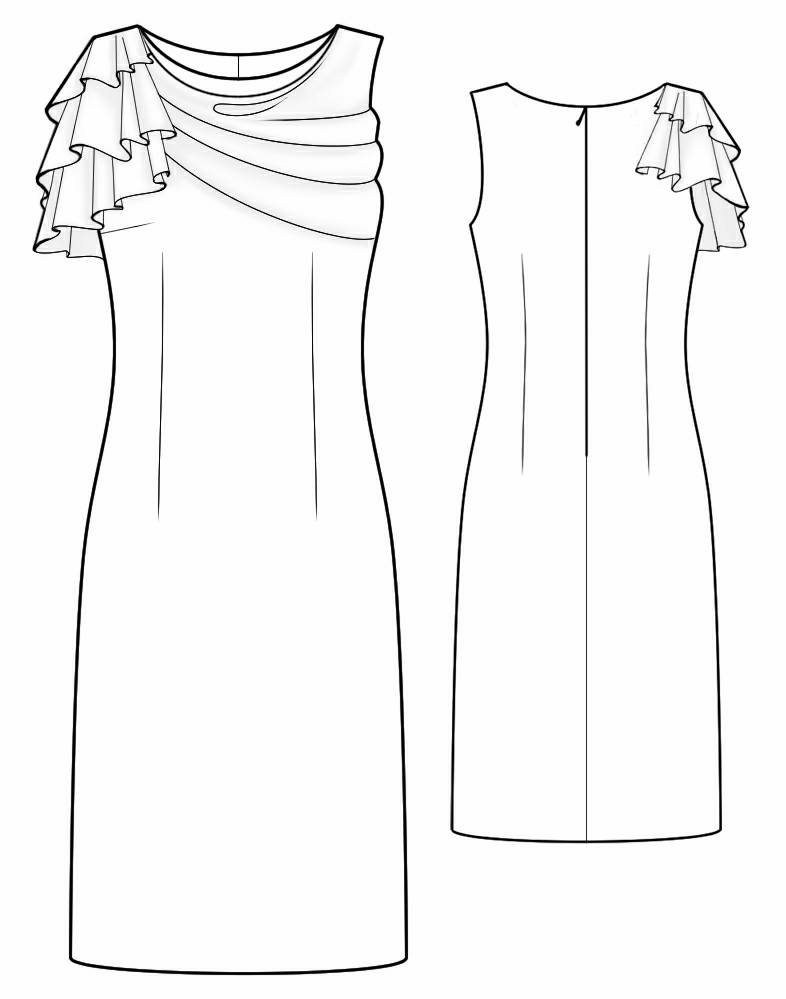Fashion designers sometimes use a technique called draping when designing and sewing garments. Basically, it involves draping fabric around a dress form and pinning it into the desired shape.

Pattern Draping is a “Hands On” Course. There are 11 Assignments and 2 Original Draping Projects. This course also has an Open book Midterm (Lesson 6) and Practical Final Exam (Lesson 12). The Assignments are related to Draping Examples from the class text, Draping for Apparel Design, Second Edition, by Helen Joseph-Armstrong. Full Playlist: more How to Draw Fashion Sketches videos: http://www.howcast.c.
Today, we’ll share the 7 basic steps for draping on a dress form.
To really master draping and other dressmaking basics, enroll in the Craftsy course Fashion Draping, taught by designer Paul Gallo.
1. Prep your dress form.

Make sure the measurements are accurate. If you haven’t already, mark the center line of the dress form with tape. This will help you keep your draping even across the body. If you already have an idea of the lines of your garment, such as the shape of the neckline, you can add those with tape, as well. This helps keep your draping on track.
2. Work from a sketch or photograph.
You should have a design idea in mind when you get to the dress form. A sketch or reference photograph will give you an idea of how you need to manipulate the fabric. Of course, you can also just play with the fabric and use its behavior as the basis of your design, but less experienced designers will be less frustrated when they have something to work off of.
Draping Dress Sketch Design
3. Start with muslin.
You might want to start with fitting muslin to avoid wasting good fabric, but keep in mind that different types and weights of fabric behave very differently when draped, so choose a muslin weight that is close to the weight of your fabric.
4. Create your foundation piece and pin it to your dress form.
Most fabrics will require a foundation piece of some sort to support the weight of the fabric. You can skip this step if you’re working with very sturdy fabric. If your main fabric is sheer, be sure to choose a fabric that’s close to your skin tone or one that matches the main fabric if you don’t want to see the foundation fabric when the garment is worn.
The foundation piece should be fitted to the dress form. (If you’ve constructed a bodice sloper based on your measurements, that’s an excellent place to start!) If you have a basic idea of the design details you want to include (such as a sweetheart neckline or off-the-shoulder sleeves), be sure the foundation piece reflects that, since it will make Step 5 much easier.

5. Start pinning!
Draping Dress Sketch
Make sure you have enough fabric to cover the area. You can always cut the extra off later. Draping is usually done in sections: front bodice, back bodice, front skirt, back skirt. Choose a spot where the folds are most prevalent and begin there. Your sketch or photograph will come in handy at this point.
Trial and error coupled with patience is the name of the game. If you find yourself getting frustrated, take a step back and walk away for a bit. Use chalk to mark any additional seam lines or darts.
6. Baste the fabric to the foundation piece.
Once you’re satisfied with the draping, use a contrasting color thread to baste the fabric to the foundation piece (or to itself if you’re not using a foundation piece). Go slowly so you won’t miss any folds in the process. This will allow you to remove the pins without undoing all of your hard work.
7. Trim off any excess fabric and continue constructing your garment.
Draping Dress Sketch Reference
The raw edges of your draping should be hidden in the seams. At this point, you can remove your basting stitches.
